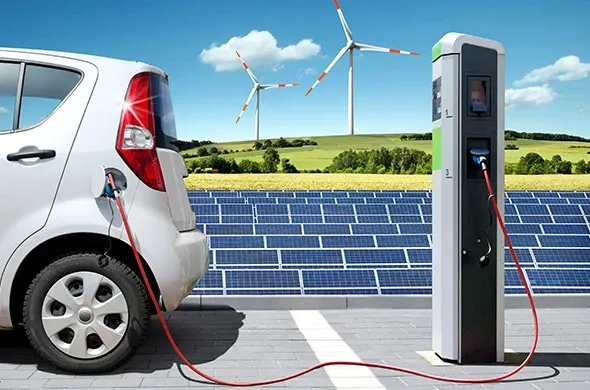Global EV Transition at Crossroads
The global electric vehicles market is entering a phase of divergence, fragmenting the global electrification transition, according to Counterpoint Research.

One in two cars will have an electric powertrain by 2030, according to the latest research from Counterpoint’s Passenger Vehicle Forecast. The increase in environmental awareness among buyers, favorable carbon emission norms, support from governments, and the collaborative efforts of ecosystem players are all helping electric vehicle (EV) adoption across the world. However, EV penetration was still below 10% of global passenger vehicle sales in 2021.
China is leading the global EV market, followed by Europe and the US. The rest of the world will be the fastest-growing region in terms of EV adoption, driven by Vietnam, Singapore, Thailand, and Canada. The EV market in China is influenced by government policies. However, China has reduced subsidies on EVs by 30% in 2022 compared to 2021. Further, the rising inflation rate and supply shortages due to COVID-19 outbreaks have forced OEMs to increase EV prices. April was the weakest month for EV sales in China this year. We expect the situation to improve after COVID-19 restrictions are relaxed and OEMs resume production. The EV sales in China are projected to cross six million units by the end of this year.
Europe is aiming to reduce emission levels by 15% in 2025 and by 37.5% in 2030 from the 2021 levels. This is one of the major reasons for Europe’s EV sales to cross the two million mark in 2021, despite the COVID-19 outbreak. More than 10 countries including Norway, Denmark, France, Germany, the United Kingdom, and the Netherlands have proposed to phase out new sales of petrol and diesel cars. This will help Europe maintain its second position in the global EV market by 2030.
EV sales in the US increased by nearly 100% YoY in 2021. The Biden government has set an ambitious target of 50% of sales being EVs by 2030. Federal and state administrations had previously taken a less supportive approach to EV adoption compared to China and Europe. The latest policy will encourage both OEMs and consumers to be more comfortable opting for EVs over traditional fuel vehicles. Moreover, the US will provide $7.5 billion to build 0.5 million public EV charging stations. We expect the battery electric vehicle (BEV) will account for nearly 30% market share in US passenger vehicle sales by 2030 - but not the half that the government has targeted.
Other countries contributing to EV adoption include Norway, Japan, and India. EV adoption in Norway has already crossed 85% of sales in 2021 and we expect Norway will achieve 100% electrified passenger vehicle sales by 2025. Japan, however, is lagging in EV adoption compared to other developed countries. Toyota and Renault-Nissan have recently adopted a worldwide EV policy and we expect Japan will benefit from these homegrown OEMs. India is aiming to have 30% of its passenger vehicle sales as EVs by 2030. Already, homegrown players such as Tata Motors and Mahindra Electric and a few foreign players like MG Motor and Hyundai are competing for the Indian passenger EV market.
“The EV market is getting more competitive as new companies, including smartphone ecosystem players, are entering the field. Companies such as Foxconn and Xiaomi have already announced their entry into the smart electric car field to diversify business opportunities. Sony has partnered with Honda to produce affordable EVs. Tesla is also a relatively new entrant. It introduced the groundbreaking Model S around 10 years ago and now dominates the global EV market. New start-ups like Nio, Li Auto, Xpeng, Lucid Motor, Fisker, and Rivian are also trying to follow Tesla’s wheel tracks and disrupt traditional auto OEMs, many of which hesitated to invest in EV development in the initial phase. As next-gen cars will be much more software-driven, we will likely see more new players entering the market. However, the traditional players will still have an advantage thanks to their scale of manufacturing and well-established supply chains,“ said Brady Wang, associate director at Counterpoint Research.